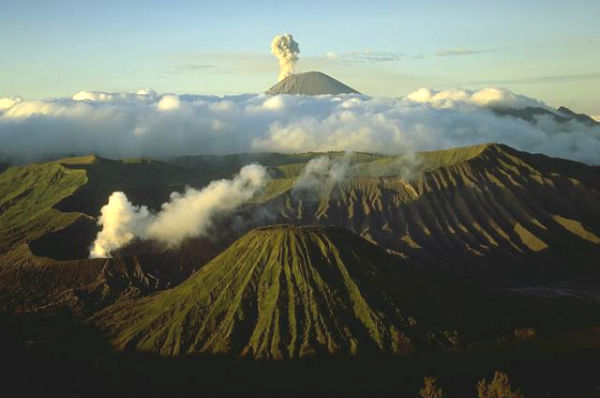VOGRIPA – A new searchable database on global volcanic activity and hazards

The University of Bristol, British Geological Survey, Smithsonian Institution and partners worldwide in Volcano Global Risk Identification and Analysis Project – VOGRIPA, announce the launch of the official website, which contains a new searchable global database on Large Magnitude Explosive Volcanic Eruptions (LaMEVE). This database contains data on global eruptions of magnitude 4 or greater, reaching back to the start of the Quaternary. Such events provide the highest risk because of their potential for large death tolls, severe societal disruption and economic losses that might be important regionally or even globally.
VOGRIPA aims to provide systematic information on global volcanic activity, hazards and vulnerability that can be analysed to identify locations at high risk from volcanism and gaps in knowledge about hazards and risk. This will facilitate risk assessments at specific locations worldwide and will enable systematic analysis of global volcanic hazards data. The VOGRIPA project will also develop new approaches to volcanic risk assessment and volcanic crisis management.
Search the VOGRIPA database for volcanoes and eruption events
The LaMEVE database comprises Quaternary eruptions of magnitude 4 and above, and contains data regarding the age, volumes and magnitudes of each eruption, with further data provided for many. The database can be searched via a spatial tool and or a series of attributes, and the results can be viewed online or downloaded for further analysis. Data collation is an ongoing process and we welcome input and comments from the volcanological community, and indeed this is vital to maintain an up-to-date, comprehensive and sustainable database (please email vogripa-admin@bristol.ac.uk).
LaMEVE is the first stage in VOGRIPA, with further databases of volcanic hazards and vulnerability being prepared in a collaborative effort with many institutions. These databases are complementary to the Smithsonian’s GVP database and will be inter-related to permit the identification of locations at high risk and gaps in knowledge, and to allow scientists and disaster managers to analyse risk within a global context of systematic information.
VOGRIPA is a component of the Global Volcano Model (GVM) international collaboration and is endorsed by the International Association of Volcanology and Chemistry of the Earth’s Interior (IAVCEI).
VHub Collaborative volcano research and risk mitigation
Featured image: Semeru, Java’s highest volcano, is seen in eruption on the skyline at the southern end of a volcanic chain extending from Tengger caldera on the north. The ribbed post-caldera cone of Batok is the center foreground and the steaming cone of Bromo in the left foreground. This sunrise view from the rim of Tengger caldera is a popular tourist destination. (Photo by Lee Siebert, 1995 /Smithsonian Institution)

[…] is a popular tourist destination. (Photo by Lee Siebert, 1995 /Smithsonian Institution) VOGRIPA – A new searchable database on global volcanic activity and hazardsRelated posts:Volcanoes could trigger bigger climate impact than thought Volcanic eruptions might […]
[…] VOGRIPA – A new searchable database on global volcanic activity and hazards. Share this:TwitterFacebookLinkedInTumblrMoreEmailPrintGoogle +1DiggRedditPinterestStumbleUponLike this:LikeBe the first to like this. […]